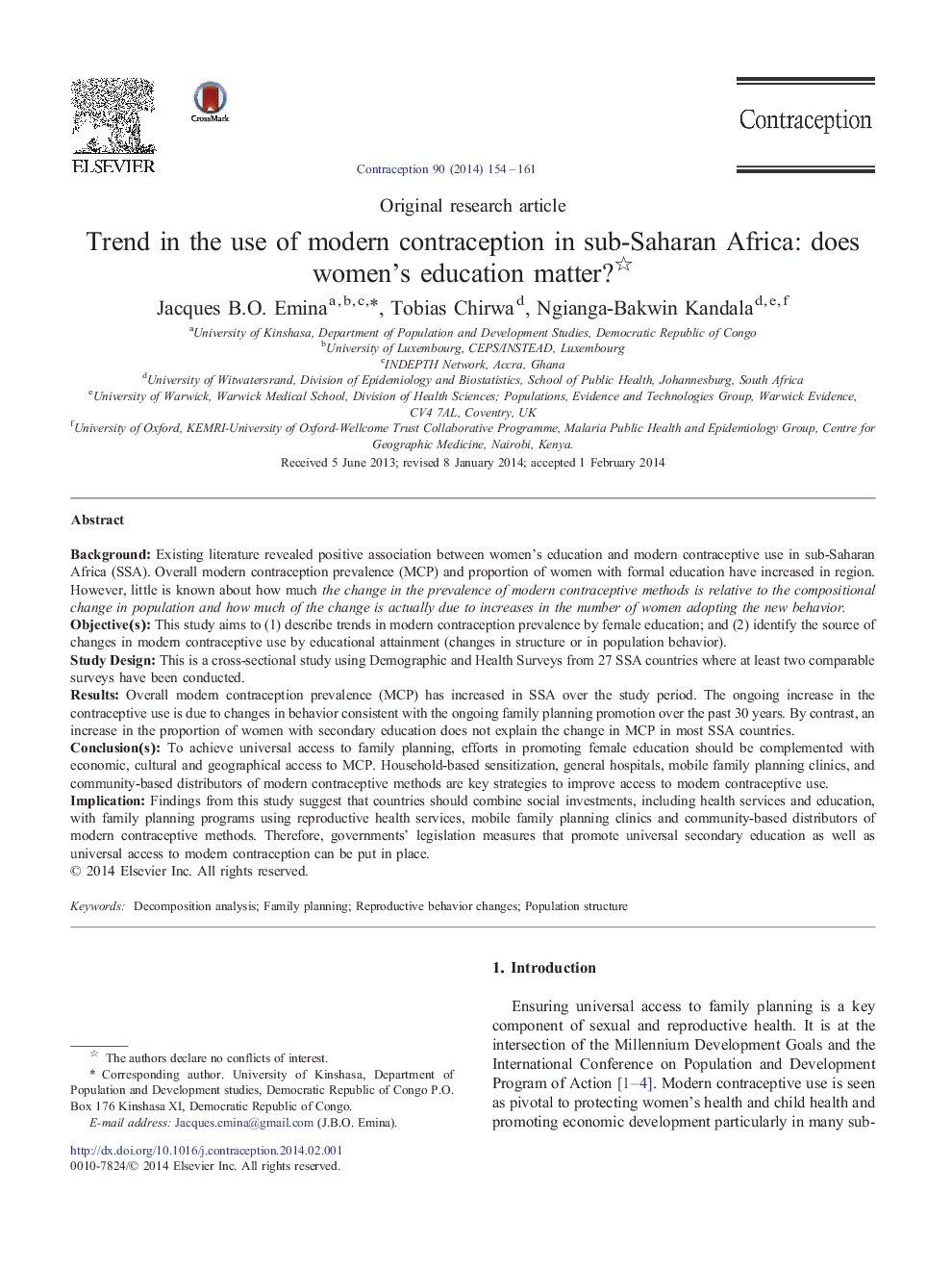| Article ID | Journal | Published Year | Pages | File Type |
|---|---|---|---|---|
| 6171654 | Contraception | 2014 | 8 Pages |
BackgroundExisting literature revealed positive association between women's education and modern contraceptive use in sub-Saharan Africa (SSA). Overall modern contraception prevalence (MCP) and proportion of women with formal education have increased in region. However, little is known about how much the change in the prevalence of modern contraceptive methods is relative to the compositional change in population and how much of the change is actually due to increases in the number of women adopting the new behavior.Objective(s)This study aims to (1) describe trends in modern contraception prevalence by female education; and (2) identify the source of changes in modern contraceptive use by educational attainment (changes in structure or in population behavior).Study DesignThis is a cross-sectional study using Demographic and Health Surveys from 27 SSA countries where at least two comparable surveys have been conducted.ResultsOverall modern contraception prevalence (MCP) has increased in SSA over the study period. The ongoing increase in the contraceptive use is due to changes in behavior consistent with the ongoing family planning promotion over the past 30 years. By contrast, an increase in the proportion of women with secondary education does not explain the change in MCP in most SSA countries.Conclusion(s)To achieve universal access to family planning, efforts in promoting female education should be complemented with economic, cultural and geographical access to MCP. Household-based sensitization, general hospitals, mobile family planning clinics, and community-based distributors of modern contraceptive methods are key strategies to improve access to modern contraceptive use.ImplicationFindings from this study suggest that countries should combine social investments, including health services and education, with family planning programs using reproductive health services, mobile family planning clinics and community-based distributors of modern contraceptive methods. Therefore, governments' legislation measures that promote universal secondary education as well as universal access to modern contraception can be put in place.
